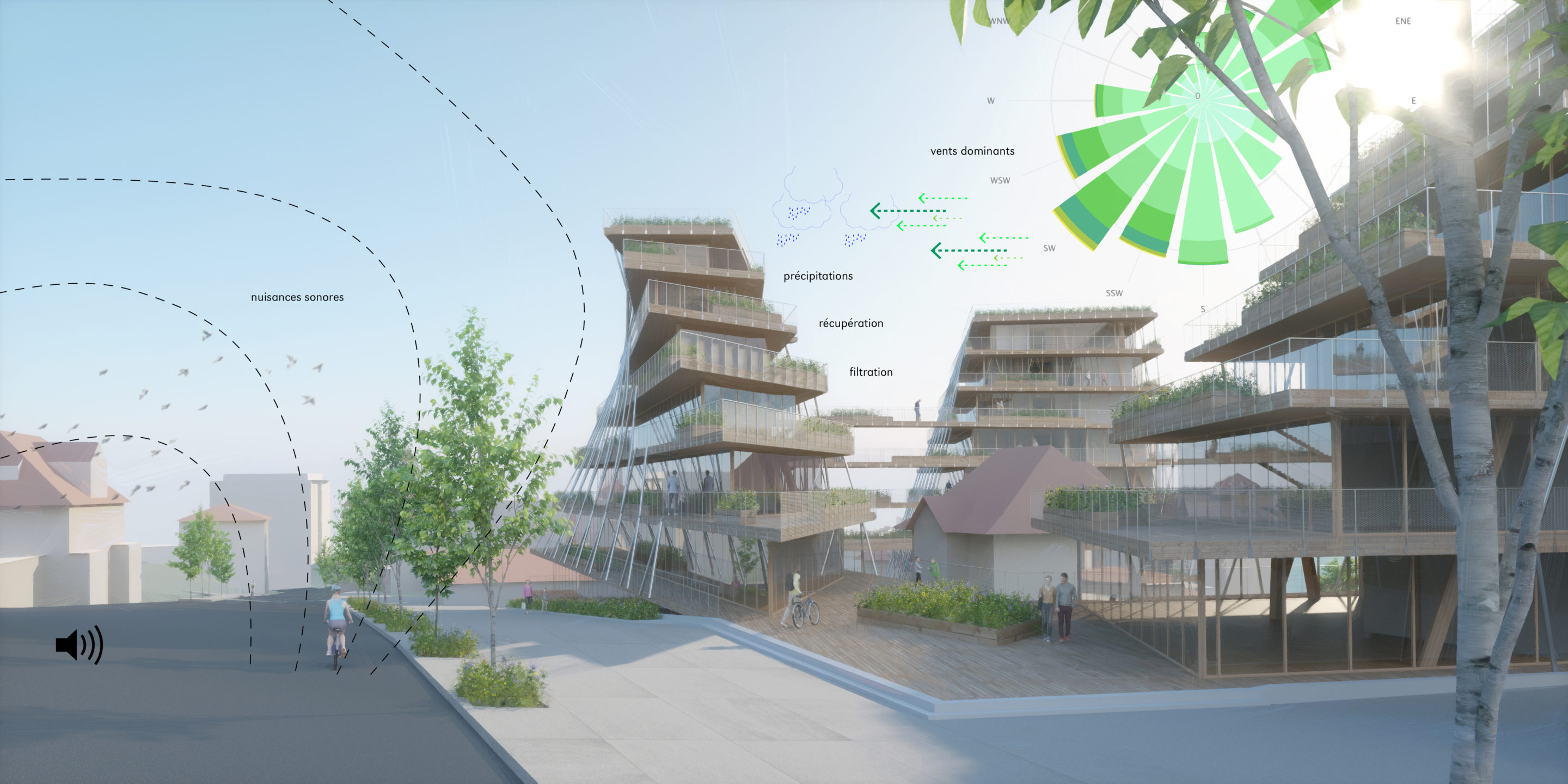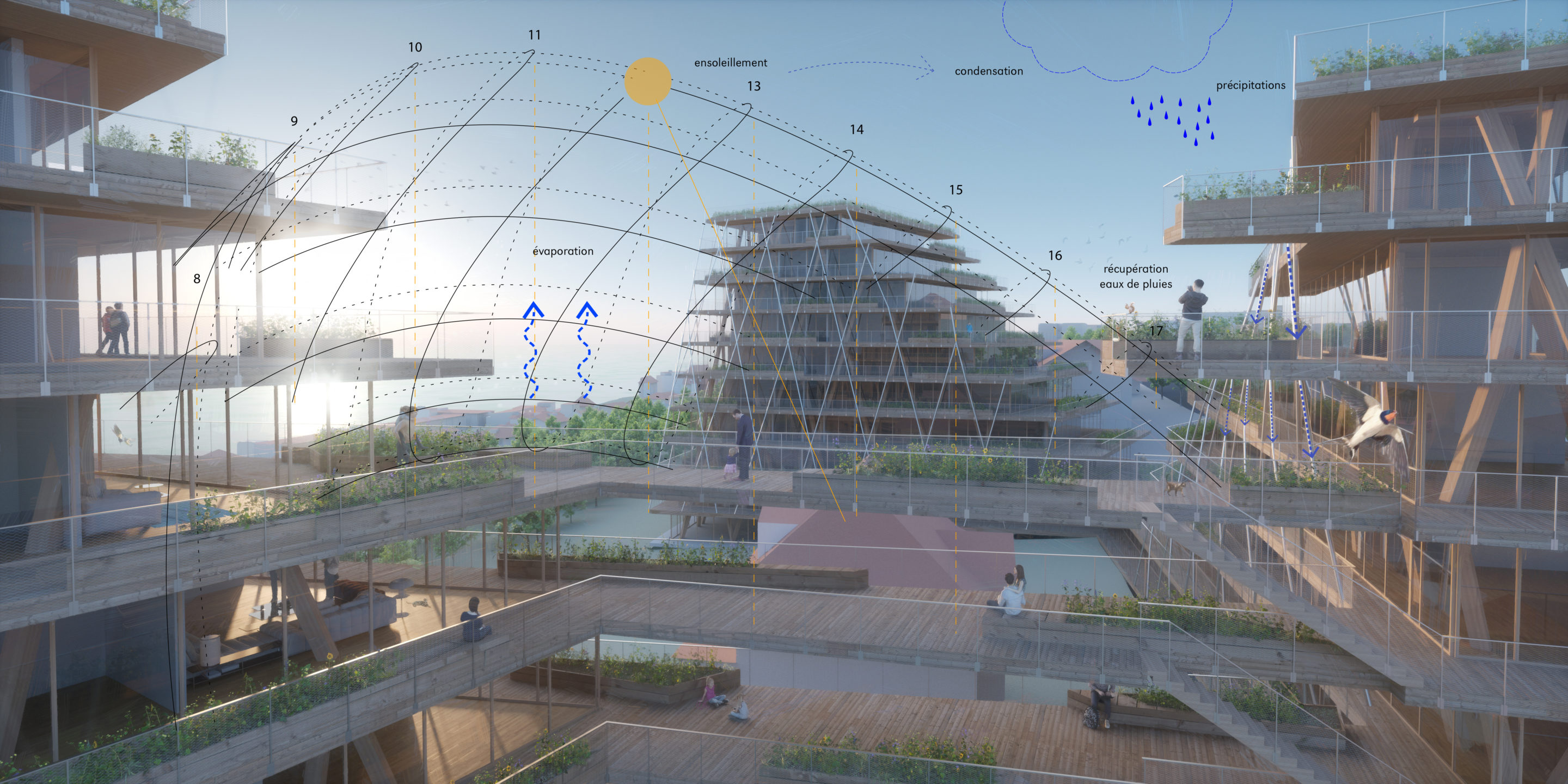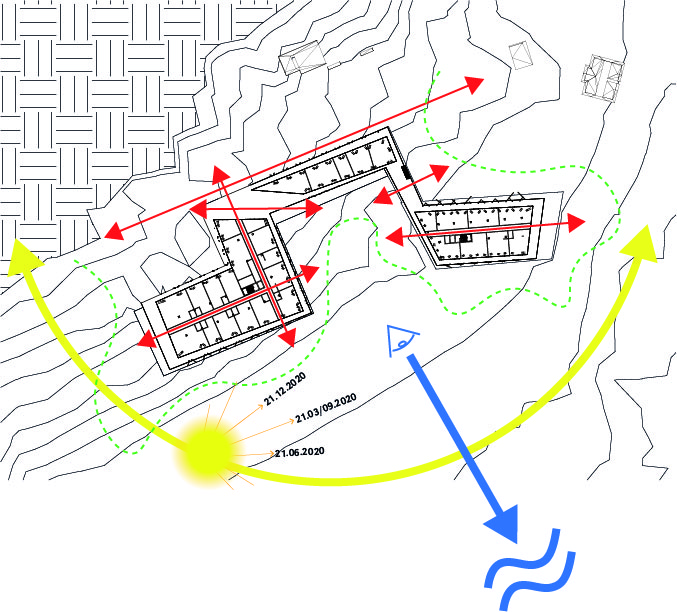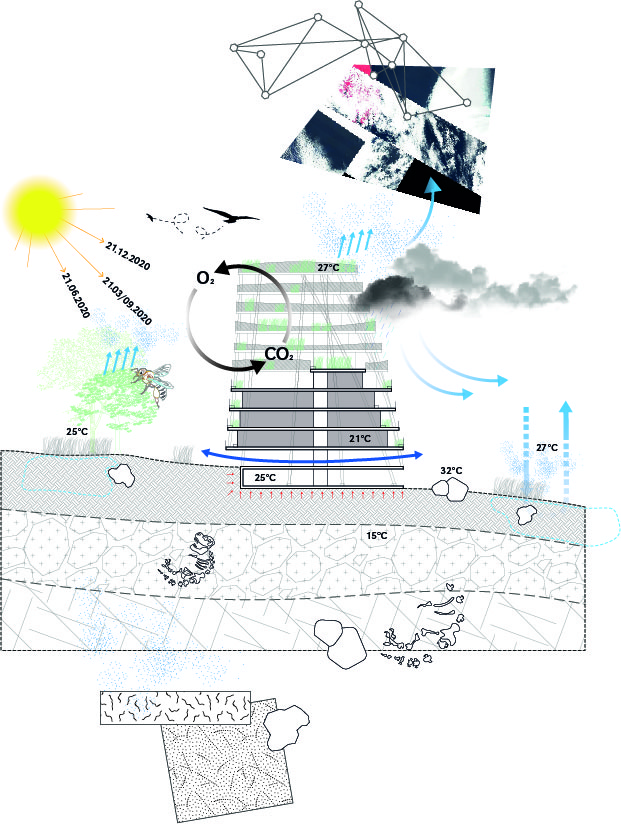In order to respond to the climate emergency, new ways of living in the world need to be thought out. New forms of habitat integrating the sun, wind and the water cycle must be imagined; new approaches to building methods must also make it possible to optimise the use of bio-geosourced materials and make the construction Itself a carbon stocks rather than a carbon emitter.
Living space, or housing, is a virtuous place in direct connection with nature and the climate. The important elements to consider are the direction of the sun (to maximise heat gains but also to avoid overheating), the capacity of a building to capture rainwater (to create a water system that can be used directly on site for certain sanitary needs) and the wind potential (to protect against it or to use it for cooling).
The site is currently very interesting with a strong “urban” potential; the overall shape favours this dynamic close to the street and an existing house. There are some collective activities there, while the south of the site is fully vegetated and irrigated. This space becomes a sanctuary for biodiversity and a pleasant cool area for the inhabitants.
A construction of such a scale must use ecological materials implemented in a very efficient way. Wood is a very good material for the timber structure, while small diameter wood can be used to fill in slabs. Excavated earth is also used to provide thermal inertia to the building where necessary. The circular economy makes it possible to see the Neuchâtel conurbation as a source of resources supplying the building site.




